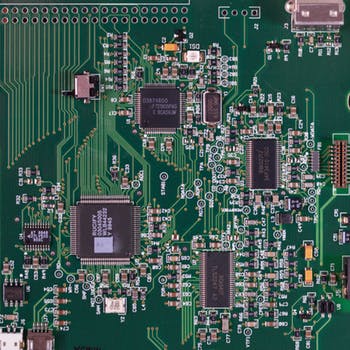The delayed time base is started (or triggered) when the MTB sweep has reached a certain level, which is compared to a preset dc level. The preset level is thus reached a certain time after the MTB has started. This time is determined by the TIME/0 1v setting of the MTB. If the signal possesses a jitter, the display of the OTB will not be stable when operated in the START mode. Usually, selecting the TRIG mode of the OTB will eliminate this trouble. If, however, the jitter is considerable, it can exceed the time between two adjacent waveforms. This may be the case with mechanical devices, such as tape or disk units of computer systems. Not even in the TRIG mode of the OTB can a unique display be obtained, because one delayed sweep may be triggered at waveform number 67 and the next one may be at waveform number 69. If all waveforms are identical (pulses), however, the display will be stable, although the observer will not know which pulse he or she is viewing.
When jitter is too excessive and leads to digital delay in the Philips PM 3261 oscilloscope, a pre set counter is built in. With the aid of front-panel control knobs, a pre-set counter can be preset to any value between 0000 and 9999. The counter is reset at the end of each sweep of the MTB. At the beginning of each MTB sweep, the counter starts counting the number of DTB trigger pulses. As soon as the preset number is reached, the DTB sweep is triggered. In this way, the pulses are now identified by their number and not by their time with respect to a starting point.
Both the information to start counting and to reset the counter are taken from the MTB sweep-gating multivibrator (SGM). By differentiating the SGM pulse, the beginning and the end of the pulse (and by this the MTB sweep) can be distinguished. Also, a pushbutton, DIGITAL DELAY, is provided. By depressing this button, the display will indicate 0001. Any preset value to 9999 can now be set by the COUNT control. This control can be set to count up or to count down at a speed, which is determined by the position of the control knob. The further the COUNT control is turned away from its mid position, the faster the counting will be. The count range varies from 1 count per 2 seconds to 60 counts per second. The counting speed can be increased to range from 15 to 1500 counts per second by pulling out the COUNT knob. The variable count rate not only enables the operator to set the preset value quickly, but also allows him or her to examine a train of pulses, or a block of data bits, step by step at a convenient speed. Turning back the COUNT control knob to its mid-position stops counting. The intensified part of the picture can be displayed magnified in the DELAYED time-base mode.

References
http://www.antiqueradios.com/forums/viewtopic.php?t=58792
https://www.quora.com/How-time-delay-is-measured-in-oscilloscope







